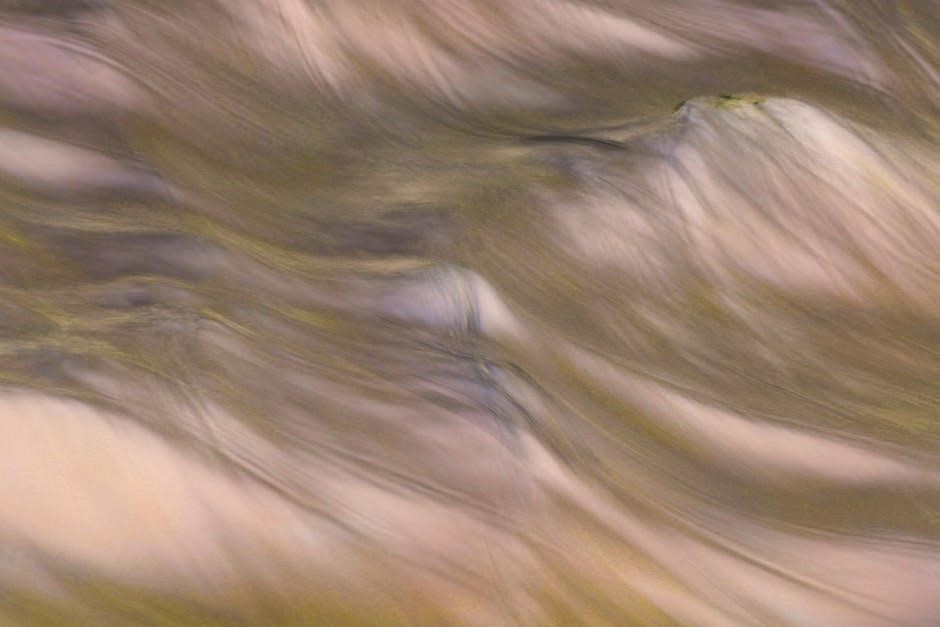Aerial photography resumes showcase creativity, technical expertise, and safety protocols. They highlight work experience, certifications, and skills in drone operation, ensuring a professional and detailed presentation.
1.1 Importance of a Well-Structured Resume in Aerial Photography
Creating a well-structured resume for aerial photography involves several key considerations to ensure it effectively highlights your qualifications and stands out to potential employers.
Sections and Prioritization: Begin with essential sections such as contact information, a professional summary, work experience, education, certifications, technical skills, and a portfolio. Tailor your professional summary to emphasize your experience with drones and specific aerial photography projects.

Action Verbs and Quantifiable Achievements: Use action verbs and include quantifiable achievements to demonstrate the impact of your work. For example, stating “captured 500+ aerial images for a land survey project” provides a clear and impressive metric.
ATS Optimization: Incorporate relevant keywords to improve your resume’s visibility through Applicant Tracking Systems (ATS). Key terms might include “drone operation,” “UAV,” “photogrammetry,” and specific software like Adobe Photoshop or GIS tools.
Formatting: Use bullet points to keep sections organized and readable. Consider a combination resume format to highlight both skills and work experience, which is particularly effective in a technical field like aerial photography.
Certifications and Education: Highlight certifications such as FAA Part 107 and include any relevant education, even if not directly related to aerial photography. Emphasize transferable skills or related coursework.
Work Experience Details: Focus on the most relevant projects and experiences. Quantify achievements and explain their significance to demonstrate your expertise.
Portfolio Inclusion: Provide a link to an online portfolio rather than attaching a PDF, allowing easy access to your high-quality work samples.
Resume Length: Aim for a one-page resume if you’re starting out, but consider a two-page format if you have extensive relevant experience.
Proofreading: Ensure your resume is free of errors by having it reviewed by someone else before submission.

By organizing your resume thoughtfully and emphasizing your technical skills, experience, and certifications, you can create a compelling document that attracts the attention of employers in the aerial photography field.
1.2 Brief Overview of Aerial Photography as a Profession
Aerial photography combines technical expertise with creative vision, capturing images from aircraft or drones. Professionals in this field require certifications, such as FAA Part 107, and skills in drone operation, photogrammetry, and image editing. Applications span surveillance, mapping, and environmental monitoring. The role demands attention to safety protocols and adaptability to evolving technologies. A well-structured resume showcases these qualifications, helping professionals stand out in this competitive and dynamic industry.

Key Sections to Include in an Aerial Photography Resume
Aerial photography resumes should include contact info, professional summary, work experience, drone skills, education, certifications, technical skills, and a portfolio to highlight expertise and achievements effectively.
2.1 Contact Information and Professional Summary
Your aerial photography resume should start with clear contact details, including your name, phone number, email, and portfolio link. The professional summary should concisely highlight your expertise in drone operations, photography skills, and relevant certifications. This section sets the tone, showcasing your ability to deliver high-quality aerial content and safety protocols. Ensure it’s concise yet impactful, immediately grabbing the reader’s attention with your unique value proposition.
2.2 Work Experience and Drone Operation Skills
Highlight your experience in capturing high-quality aerial images and videos, emphasizing drone operation skills. Mention specific projects, such as mapping, surveying, or creative photography. Include details like the types of drones used, flight hours logged, and adherence to safety protocols. Quantify achievements, such as completing a 500-acre survey or delivering imagery for critical infrastructure projects. Showcase your ability to operate in challenging environments and adapt to client needs, demonstrating both technical proficiency and creative vision.
2.3 Education and Certifications
Include your educational background, such as a degree in photography, film production, or a related field. Highlight certifications like FAA Part 107 for drone operation or specialized training in aerial photography. Mention coursework or workshops focused on aerial surveying, photogrammetry, or UAV technology. List professional certifications from recognized organizations, ensuring they align with industry standards and demonstrate your expertise in aerial photography and drone operations. This section validates your technical and creative qualifications.
2.4 Technical Skills and Software Proficiency
Highlight your proficiency in drone operation, aerial photography tools, and post-processing software. List skills like Adobe Photoshop, Lightroom, and Pix4D for photo editing and mapping. Include experience with GIS and QGIS for spatial data analysis. Mention expertise in drone models such as DJI or Autel, and knowledge of autonomous flight systems. Emphasize your ability to use photogrammetry software for 3D modeling and data analysis tools for interpreting aerial imagery. This section demonstrates your technical versatility and software mastery.
2.5 Portfolio and Sample Work
A strong portfolio is essential for showcasing your aerial photography expertise. Include high-resolution images, videos, and projects demonstrating your technical and creative skills. Highlight specific achievements, such as 3D modeling or orthomosaic maps, to illustrate your capabilities. Link to an online portfolio or attach a PDF with sample work. Ensure your samples reflect diverse projects, from land surveys to artistic captures, proving your versatility and mastery of aerial photography techniques.

Best Practices for Writing an Aerial Photography Resume
Use action verbs and quantify achievements to highlight your impact. Tailor your resume to each job description and incorporate ATS-friendly keywords for better visibility and results.
3.1 Using Action Verbs and Quantifiable Achievements
Enhance your resume by using strong action verbs like “captured,” “piloted,” or “analyzed” to describe your aerial photography experiences. Include quantifiable achievements, such as “delivered 500+ high-resolution images” or “conducted 30+ drone missions.” These specifics demonstrate your impact and professionalism. For example, mention “optimized photogrammetric mapping processes, reducing project timelines by 20%.” This approach makes your resume more dynamic and results-oriented, showcasing your skills and accomplishments effectively to potential employers.
3.2 Tailoring Your Resume to the Job Description
Customize your resume by aligning it with the job description to highlight relevant skills and experiences. Analyze the job requirements and incorporate keywords related to aerial photography, such as “drone operation,” “photogrammetry,” or “aerial surveying.” Adjust your professional summary and work experience to emphasize achievements that match the employer’s needs. For example, if the job emphasizes technical skills, prioritize software proficiency like Adobe Lightroom or AutoCAD. This tailored approach ensures your resume stands out and demonstrates your suitability for the role, increasing the likelihood of passing ATS systems.
3.3 Incorporating Keywords for ATS Optimization
Optimize your resume for Applicant Tracking Systems (ATS) by strategically incorporating industry-specific keywords. Use terms like “aerial photography,” “drone pilot,” “photogrammetry,” and “UAV operations” to ensure your resume passes through automated screenings. Analyze job descriptions to identify relevant keywords and integrate them naturally into your professional summary, work experience, and skills section. This improves your resume’s visibility, making it more likely to be seen by hiring managers. Regularly update your keywords to match evolving job requirements.

Aerial Photography Resume Templates and Samples
Discover professional resume templates tailored for aerial photographers, offering structured formats to showcase skills, certifications, and portfolio links. Explore downloadable PDF samples for inspiration.
4.1 Overview of Popular Resume Templates for Aerial Photographers
Popular resume templates for aerial photographers emphasize a clean, modern design, highlighting technical skills and creative portfolios. They often feature sections for certifications, drone operation experience, and software proficiency. These templates are structured to be ATS-friendly, ensuring visibility to hiring managers. Many include customizable fields for project specifics, such as aerial survey missions or photogrammetry achievements. Versatile and professional, these templates cater to both freelance and corporate roles in the industry.
4.2 Where to Find Free and Paid PDF Templates Online
Free and paid PDF templates for aerial photography resumes are available on platforms like Canva, Template.net, and Creative Market. These sites offer customizable designs tailored for creative professionals. Additionally, resources like Behance and Dribbble provide inspiration and unique layouts. Paid options often include advanced features and ATS optimization, ensuring your resume stands out. Google Docs and Microsoft Word also offer basic templates that can be adapted for aerial photography roles. Explore these options to find the perfect fit.
4.3 Analyzing Sample Resumes for Inspiration
Analyzing sample resumes for aerial photography provides insights into effective formatting and content organization. Look for resumes that highlight drone operation skills, certifications, and project-specific achievements. Pay attention to how technical skills and software proficiencies are presented. Professional platforms like LinkedIn and resume databases offer diverse examples. Study how portfolios are integrated and how keywords are incorporated for ATS optimization. Use these samples to identify trends and adapt elements that align with your experience and career goals in aerial photography.

Tips for Creating a Standout Aerial Photography Resume
Highlight drone operation skills, safety protocols, and project-specific achievements. Include a portfolio, quantify results, and emphasize certifications. Tailor your resume to showcase technical expertise and creativity effectively.
5.1 Highlighting Drone Operation and Safety Protocols

Emphasize your expertise in drone operation, including specific UAV models and flight hours. Detail safety protocols, such as pre-flight checks and adherence to regulations. Highlight certifications like Part 107 or equivalent. Quantify achievements, such as incident-free flight hours or successful mission completions. Showcase your ability to operate in challenging environments and handle emergency procedures. This demonstrates professionalism and reliability, making your resume stand out in the competitive aerial photography field.
5.2 Emphasizing Project-Specific Achievements
Highlighting project-specific achievements showcases your impact in aerial photography. Mention specific missions, like capturing high-resolution images for mapping or conducting surveys. Quantify results, such as completing 500+ flight hours or delivering data for environmental assessments. Describe how your work improved project efficiency or contributed to decision-making. Use action verbs like “captured,” “analyzed,” or “delivered” to demonstrate your role. This approach connects your skills to real-world outcomes, making your resume more compelling to employers.
5.3 Including Relevant Tools and Technologies
Incorporate tools like drones, UAVs, and photogrammetry software to demonstrate technical proficiency. List specific equipment, such as DJI or Autel drones, and software like Adobe Lightroom or Pix4D. Mention certifications for drone operation and data analysis. Highlight familiarity with GPS, aerial cameras, and geospatial tools. This showcases your ability to handle modern aerial photography workflows and aligns your skills with industry standards, making your resume more attractive to employers seeking specialized expertise.
Common Mistakes to Avoid in Aerial Photography Resumes
Avoid using incorrect file formats, vague descriptions, and lack of tailoring to job requirements. Ensure proper formatting, specific metrics, and relevant keywords are included for professional appeal.
6.1 Overlooking the Importance of Keyword Optimization
Many aerial photography resumes fail to incorporate industry-specific keywords, reducing their visibility to Applicant Tracking Systems (ATS). Keywords like “drone operation,” “UAV,” “photogrammetry,” and “GIS software” are essential for ATS optimization. Omitting these terms can cause resumes to be overlooked, even if the candidate is highly qualified. Always research and include job-specific terminology to ensure your resume passes through automated systems and reaches hiring managers. This step is crucial for increasing your chances of landing an interview in the competitive aerial photography field.
6.2 Not Providing Specific Metrics or Results
Failing to include specific metrics or results in your aerial photography resume can make your accomplishments seem vague and unimpressive. Employers want to see tangible outcomes, such as “completed 50 aerial shoots” or “delivered high-resolution imagery for a 500-acre mapping project.” Avoid general statements like “captured aerial photos” without context. Instead, quantify your achievements to demonstrate your impact and expertise effectively. This approach makes your resume stand out and shows your value as a professional in the field.
6.3 Ignoring the Need for a Professional Format
A poorly formatted resume can undermine your credibility as an aerial photographer. Avoid using multiple fonts, overly narrow margins, or including unnecessary elements like photos. Stick to clean, professional templates that highlight your skills and experience. Saving your resume as a Google Doc can also negatively impact its format. Ensure consistency in spacing, bullet points, and section headings to create a polished, professional appearance that aligns with industry standards and makes your resume easy to read.

Final Tips for Success
Proofread your resume meticulously to avoid errors. Regularly update your resume with new skills and projects. Seek professional feedback to refine your presentation and ensure clarity.
7.1 Proofreading and Editing Your Resume
Thoroughly proofread your resume to eliminate typos and grammatical errors. Use tools like Grammarly or have a professional review it to ensure clarity. Pay attention to formatting consistency, ensuring fonts, margins, and spacing are uniform. Regularly update your resume to reflect new skills, certifications, and projects. A polished resume enhances your credibility and professionalism, making it more likely to stand out to hiring managers.
7.2 Seeking Feedback from Professionals
Seeking feedback from professionals in aerial photography or HR can provide valuable insights. They can identify weaknesses, suggest improvements, and ensure your resume aligns with industry standards. Ask for input on clarity, formatting, and relevance of content. Professional feedback enhances your resume’s impact, helping you stand out in a competitive job market. Use their expertise to refine your resume and increase your chances of securing interviews.
7.3 Keeping Your Resume Updated and Relevant
Regularly updating your resume ensures it remains relevant and reflects your current skills and experiences. Add new certifications, projects, or technologies as you acquire them. Tailor your resume for each job application to highlight the most pertinent details. Use the latest PDF templates to maintain a professional format. Stay adaptable to industry trends and continuously refine your resume to showcase growth and expertise in aerial photography.
